Thinking about moving to the Costa de la Luz? You are in the right place. Here you will find all the facts and information about living on the Costa de la Luz as an expat.
Welcome to the Costa de la Luz
Have your sunglasses at the ready because this is one bright sunny place.
This southern coastline runs for over 200km (125 mi) along the Atlantic between Ayamonte, on the border with Portugal, and Sotogrande, almost in the Costa del Sol in Malaga province. It takes in two provinces in Andalusia, Huelva in the west and Cadiz in the east.
Secure Peace of Mind with Best-Value International Health Coverage
International Citizens Insurance provide free, no-obligation quotes from the leading international health insurance providers with plans tailored to meet your needs. Trusted by thousands of expats worldwide.
Is the weather good on the Costa de la Luz?
As its name suggests, the Costa de la Luz is all about the light. In weather terms, that’s over 300 days of sunshine a year. Yep, guaranteed. You’ll see a touch of rain in the fall and winter months.
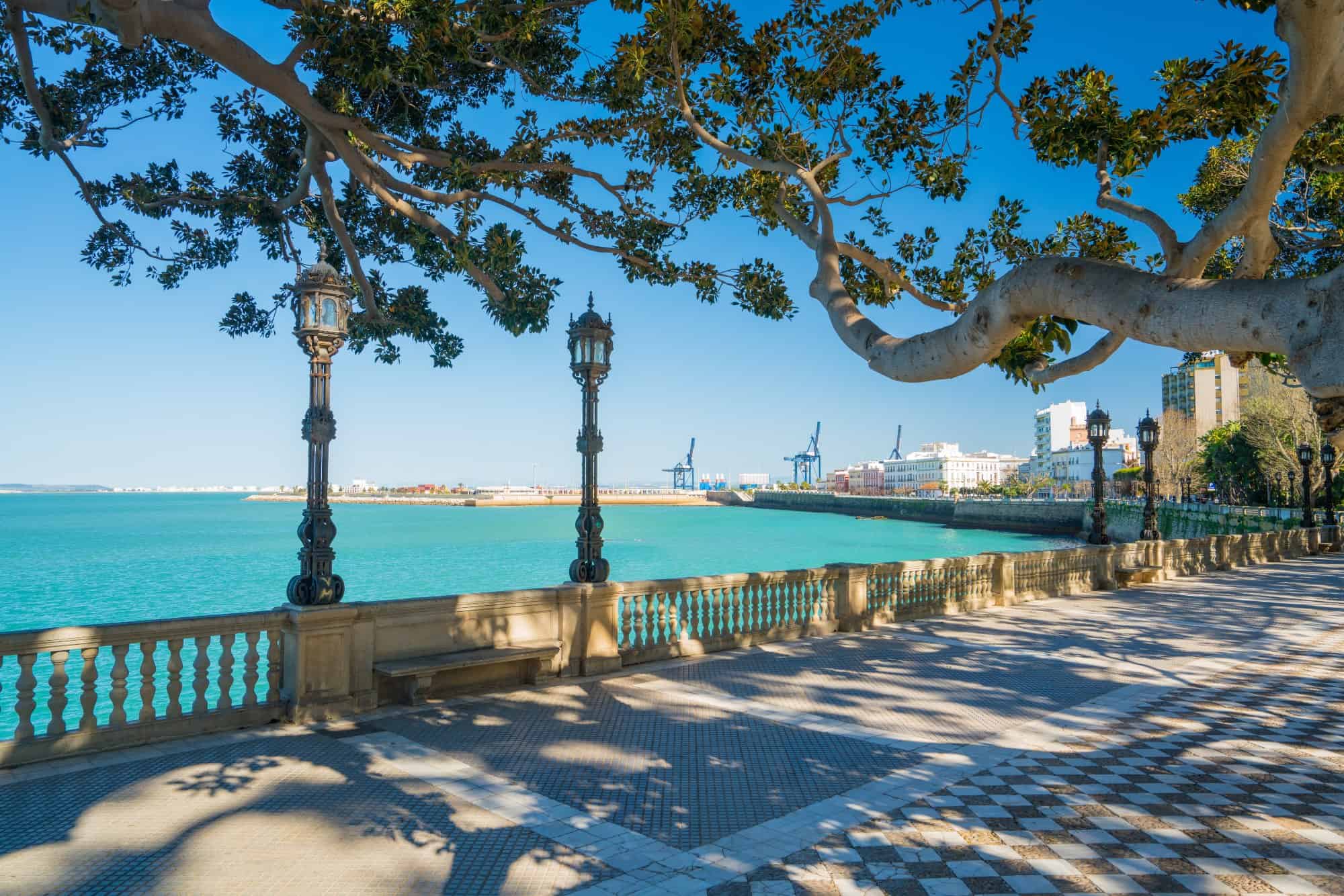
And plenty of wind – the strongest blows from the east and the next strongest from the west -and for almost 365 days a year. Yep, this one comes guaranteed too. Generally speaking, it’s windier nearer the Strait of Gibraltar, but on this coast, the light almost always goes hand in hand with the wind.
What is the Costa de la Luz like?
Southern Spain’s best beaches (by far), miles and miles of sand, strong sea breezes, lots of sunshine, fresh seafood and tuna, friendly people, and some of the best wind and kite surfing conditions in the world.
Also in the mix are Cadiz, Europe’s oldest city and a treasure trove of sights, beautiful white villages such as Vejer de la Frontera and Medina Sidonia, and bustling fishing ports that include Isla Cristina (the largest in the region) and Barbate, famous for its almadraba tuna fishing methods.
Why move to the Costa de la Luz?
All of the above, but most of all because you love living by magnificent beaches in the sunshine. And obviously, you don’t mind a bit of a breeze.
Did you know? The Costa de la Luz is known as Cadizfornia.
Is the Costa de la Luz safe?
Yes, generally. While it does have some conflictive areas (parts of Sanlúcar de Barrameda and La Línea), they tend to be because of drug dealing or tobacco smuggling. Obviously, the crime scene only involves the police, dealers, and smugglers.

Otherwise, it’s a case of being sensible. For example, don’t leave valuables on show in your car and do keep your belongings close in crowds to avoid pickpockets.
Can I live here without speaking Spanish?
Lots of foreign residents, particularly the British, will tell you the answer is most definitely, yes. Tourism is big in the area, so most people speak some English, so you can easily get by without speaking a word of Spanish. But, as always, you’ll integrate much better and understand what’s going on if you learn some of the local lingo.
Knowing a bit of Spanish can be especially helpful when dealing with red tape. Sorting out things like healthcare, taxes, residency, etc., takes time and patience. Otherwise, make sure you have a good friend who speaks Spanish and is ready to go through it with you.
Another option is to hire a gestor to help you with paperwork.
How much does it cost to live on the Costa de la Luz?
The cost of living is generally on par with the average in Spain. For the most part, it’s cheaper than the neighboring Costa del Sol, especially when it comes to property. But, you may need to tighten your wallet strings in high season when eating out and tourist accommodation can be pricey.
Average monthly budget
- A single person – $1400 / €1250 a month
- A couple – $2300 / €2000 a month
- A family of four – $3000 / €2700
If you are looking to buy or rent a home, find out how to do it safely in our guides on Buying A Property In Spain and Renting A Property In Spain.
Typical costs
- Rent for a 60m² (2-bed) apartment – around €8 per square meter, so expect to pay €500 a month.
- Buy a 60m² (2-bed) apartment – from €1,500 to €3,000 per square meter, so expect to pay €100,000 in the cheaper areas (e.g., Barbate and Chiclana de la Frontera) to €180,000 in Tarifa and Zahara de Los Atunes.
- Eating and drinking out – coffee costs from €1.20 and a glass of wine €2. A meal for two, including wine, costs from €45.
Is the Costa de la Luz very touristy?
Yes, in the summer, but not for the rest of the year. The Costa de la Luz is highly seasonal and goes from one extreme to the other.
During July and August, the coastline heaves with tourists (Spanish and foreign), the roads are jammed beyond capacity, and you’ll be in a line for most restaurants at lunch and dinner.
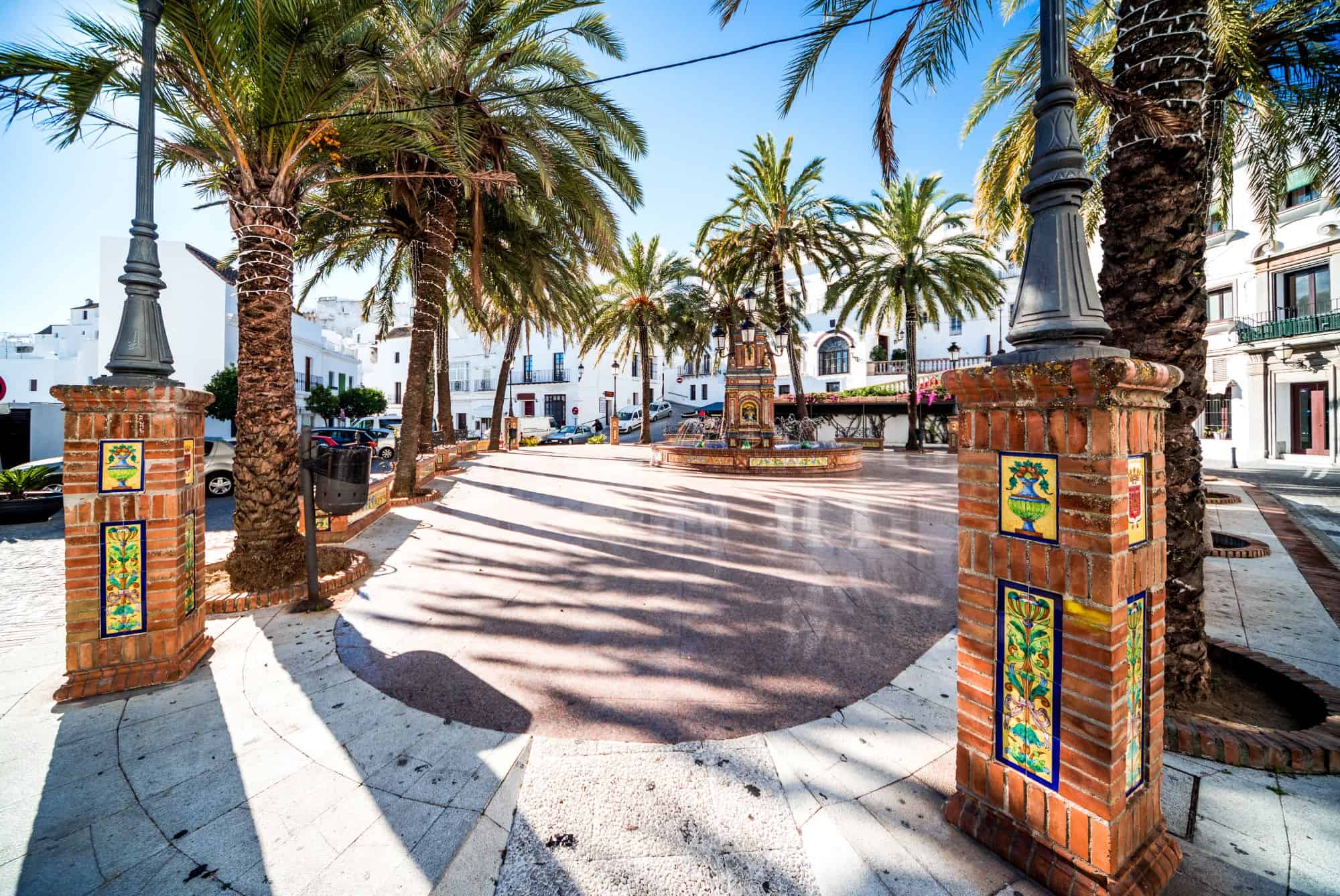
But, come September, things calm down noticeably, and the locals get their beaches, roads, and restaurants back to themselves.
You’ll see a trickle of visitors during holiday weekends, and Easter gets a little hectic too, but for almost ten months of the year, the Costa de la Luz is sleepily quiet.
Did you know? Tourism is seasonal, and many towns close down in winter or from November to Easter.
The pros and cons of living on the Costa de la Luz
Like every single corner of the world, the Costa de la Luz comes with advantages and disadvantages. When it comes to benefits, they include:
- Great weather for much of the year.
- Stunning scenery on the coast and inland.
- Some of Spain’s best beaches.
- Fresh produce is available at regular markets.
- An outdoor lifestyle.
- Good amenities in the larger towns.
- Easy access to Cadiz and Seville.
- Fantastic sporting activities, particularly those involving wind.
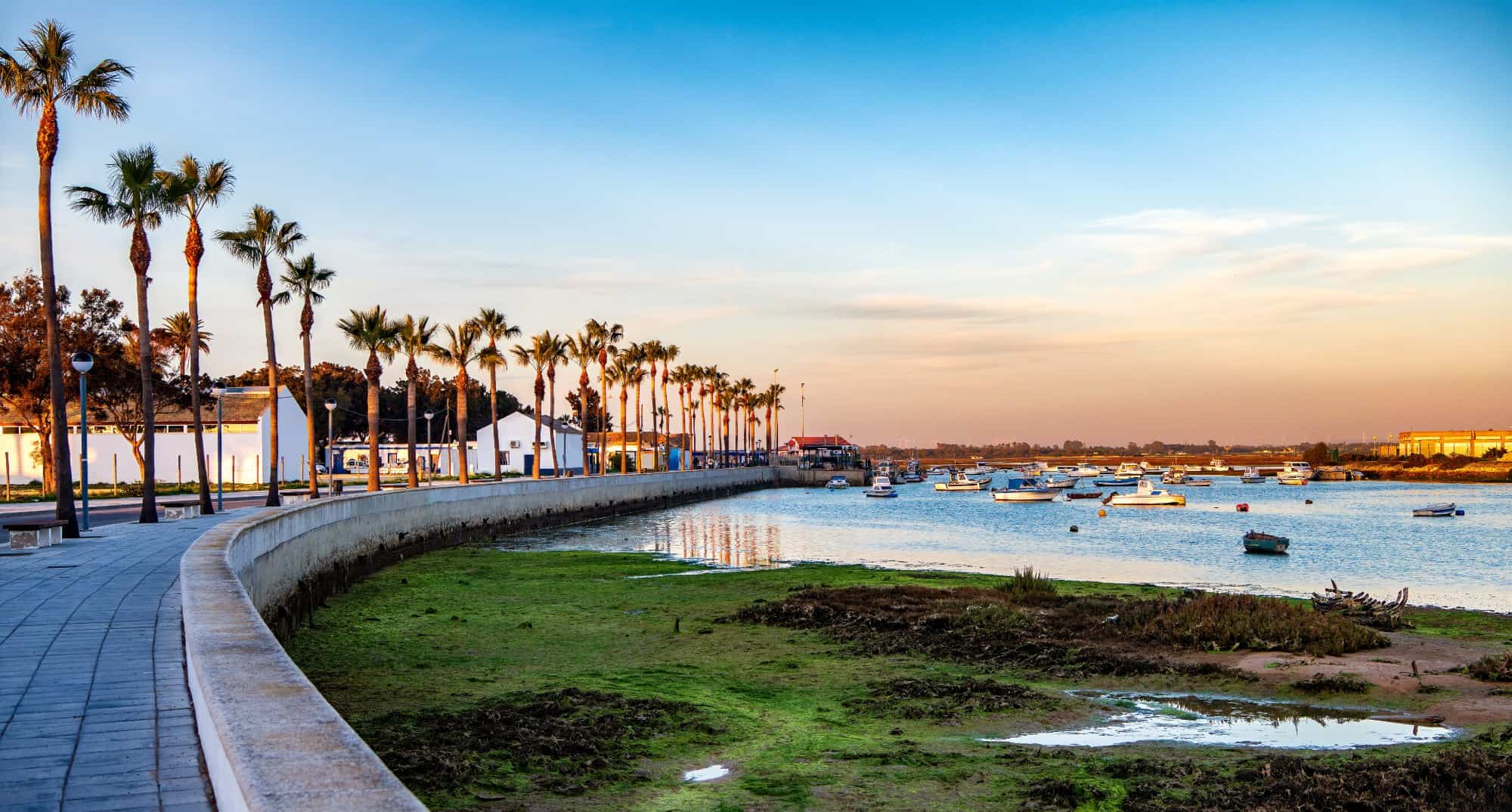
On the other hand, there are some drawbacks, such as:
- Windy weather almost 24/7.
- Very busy in the high tourist season.
- Public transport varies in frequency and depending on the season.
- There isn’t a lot going on in the low season.
Did you know? Many towns and villages in the Costa de la Luz have ‘de la Frontera after their name from when they were frontier posts between the Moorish kingdom and the rest of Spain.
The best places to live on the Costa de la Luz for expats
If you like the sound of the light, sunshine, and those sandy beaches, the Costa de la Luz could be for you. So, next up is to decide where you’re going to live.
Our mini-guide covers the most popular areas for expats, and we move from west to east, i.e. from Isla Cristina to Sotogrande. Property prices are averages quoted on real estate portals in March 2022.
1. Antilla
One long stretch of sand and mostly apartments and townhouses. Popular with Spanish tourists and second homeowners. Busy in the summer, but almost deathly quiet in winter. Few amenities outside high season. Choose this spot if you don’t mind the two extremes and fancy being close to Portugal.
- Ideal for – families and older couples.
- Price to buy per m² – €1,913
- Price to rent per m² – €8.50
2. Punta Umbría
More fabulous beaches and a distinctly maritime air with all the fishing boats and yachts on the Odiel River estuary. Reasonable choice of amenities. Surrounded by protected marshlands so good for birding and walking. You’ll love this if you enjoy nature and having quieter beaches in the summer.
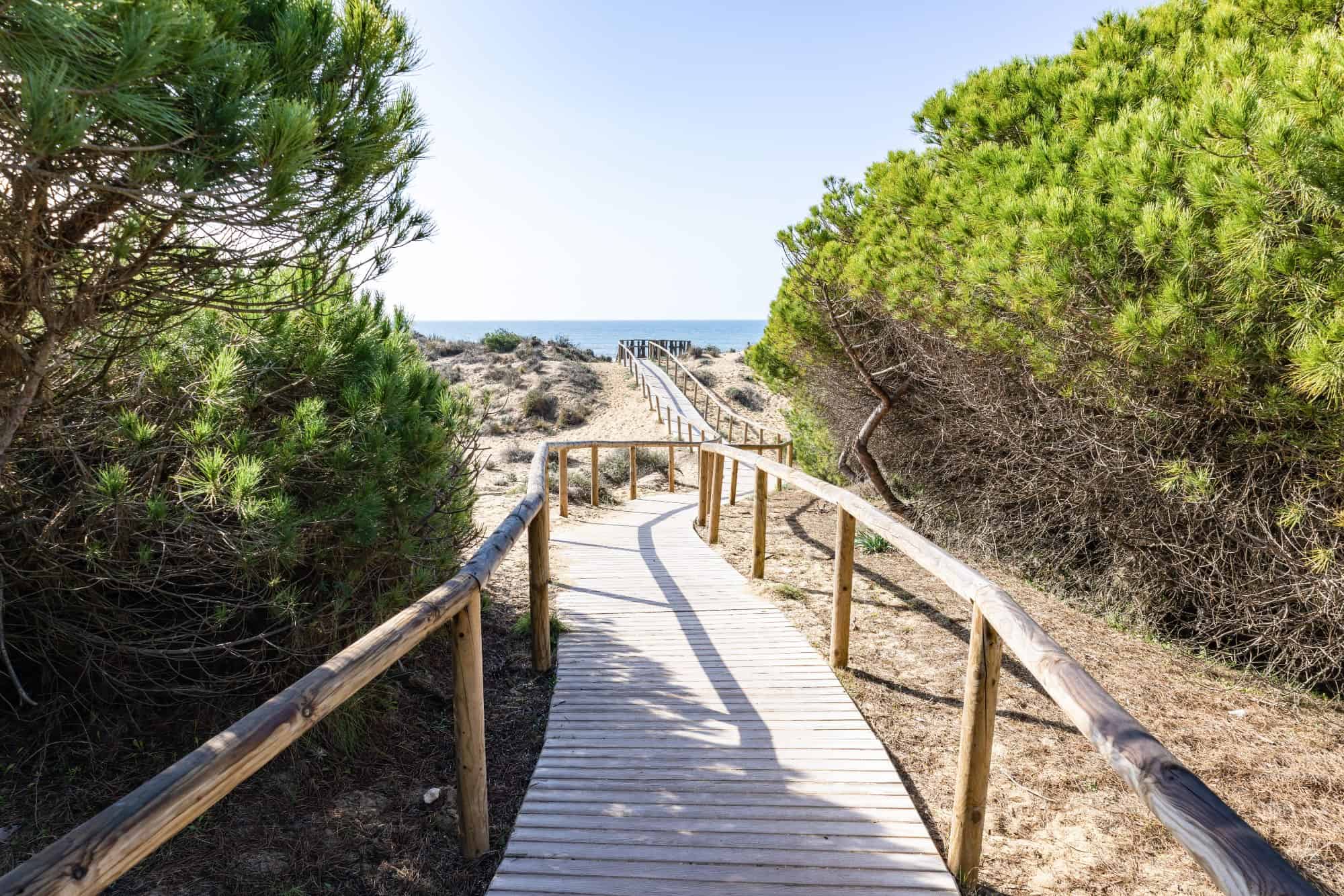
- Price to buy per m² – €1,494
- Price to rent per m² – €6.20
- Ideal for – families, walkers, and boating enthusiasts.
3. Chipiona
A quiet market town for most of the year except in the summer when Spanish tourists invade Chipiona. Yet more glorious beaches. Pretty town center with a good choice of amenities available year-round.
- Ideal for – families and older couples.
- Price to buy per m² – €1,640
- Price to rent per m² – €7.30
4. Rota
Home to a joint US-Spanish naval base, so expect plenty of Americans in uniform. More of those fantastic beaches and several giant hotels so busy in high season. Amenities are good year-round. Bustling atmosphere.
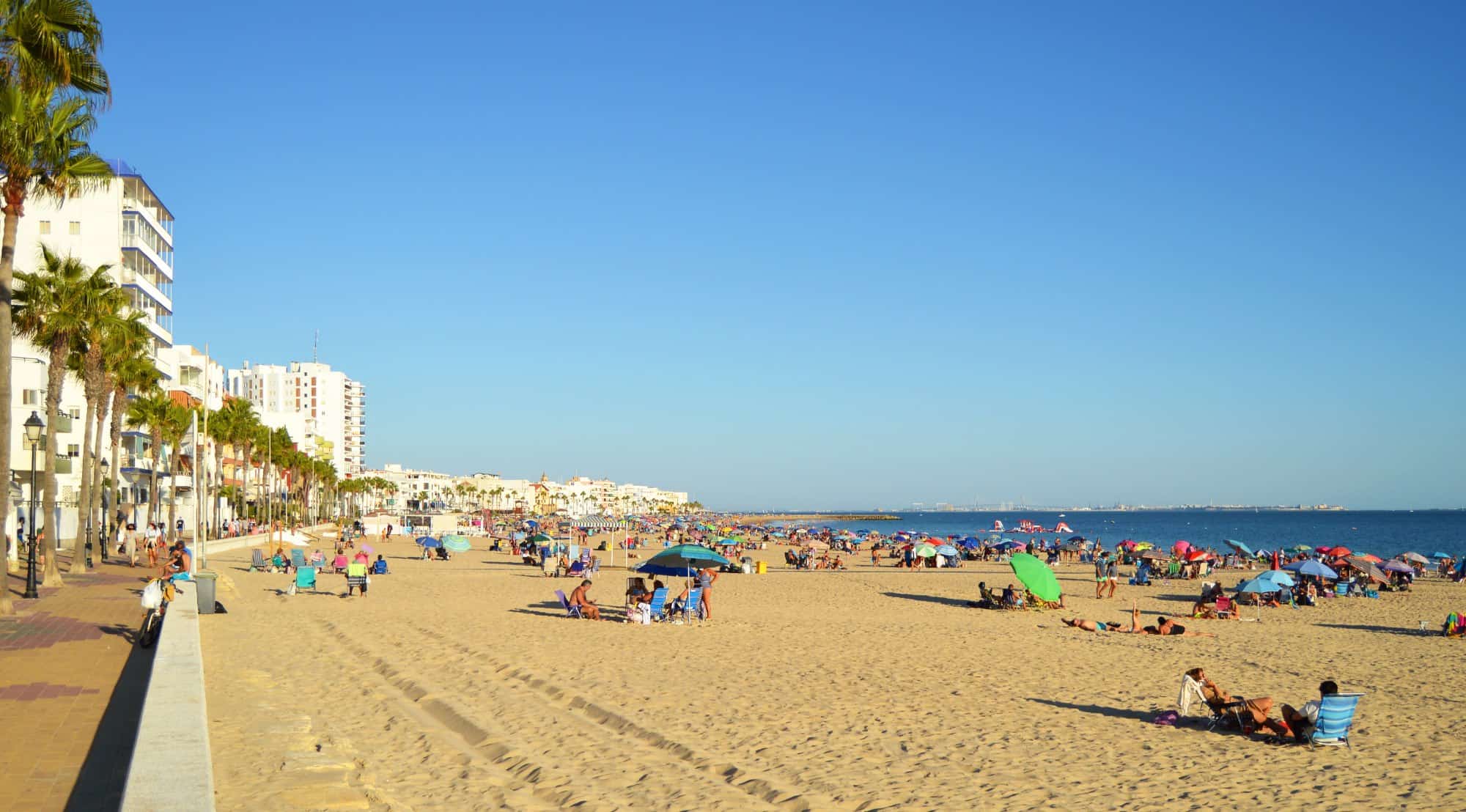
- Ideal for – relocating families, digital nomads, and US and Spanish marines.
- Price to buy per m² – €2,044
- Price to rent per m² – €8.40
5. Chiclana de la Frontera
You’ve guessed it – yet more stunning beaches, including La Barrosa (6km/ 3.75 mi long). A good selection of golf courses and hotels at Novo Santi Petri. The town itself has a lively ambiance, particularly in the summer. A good range of amenities.
- Ideal for – families, golfers, and older couples.
- Price to buy per m² – €1,383
- Price to rent per m² – €8,10
6. Conil de la Frontera
Hip and cool in the summer when younger tourists flock to the town, drawn to its surf, legendary sunsets, and nightlife. Much quieter in the winter, but amenities stay open. Plenty more beautiful beaches. Next to the historic Cape Trafalgar.
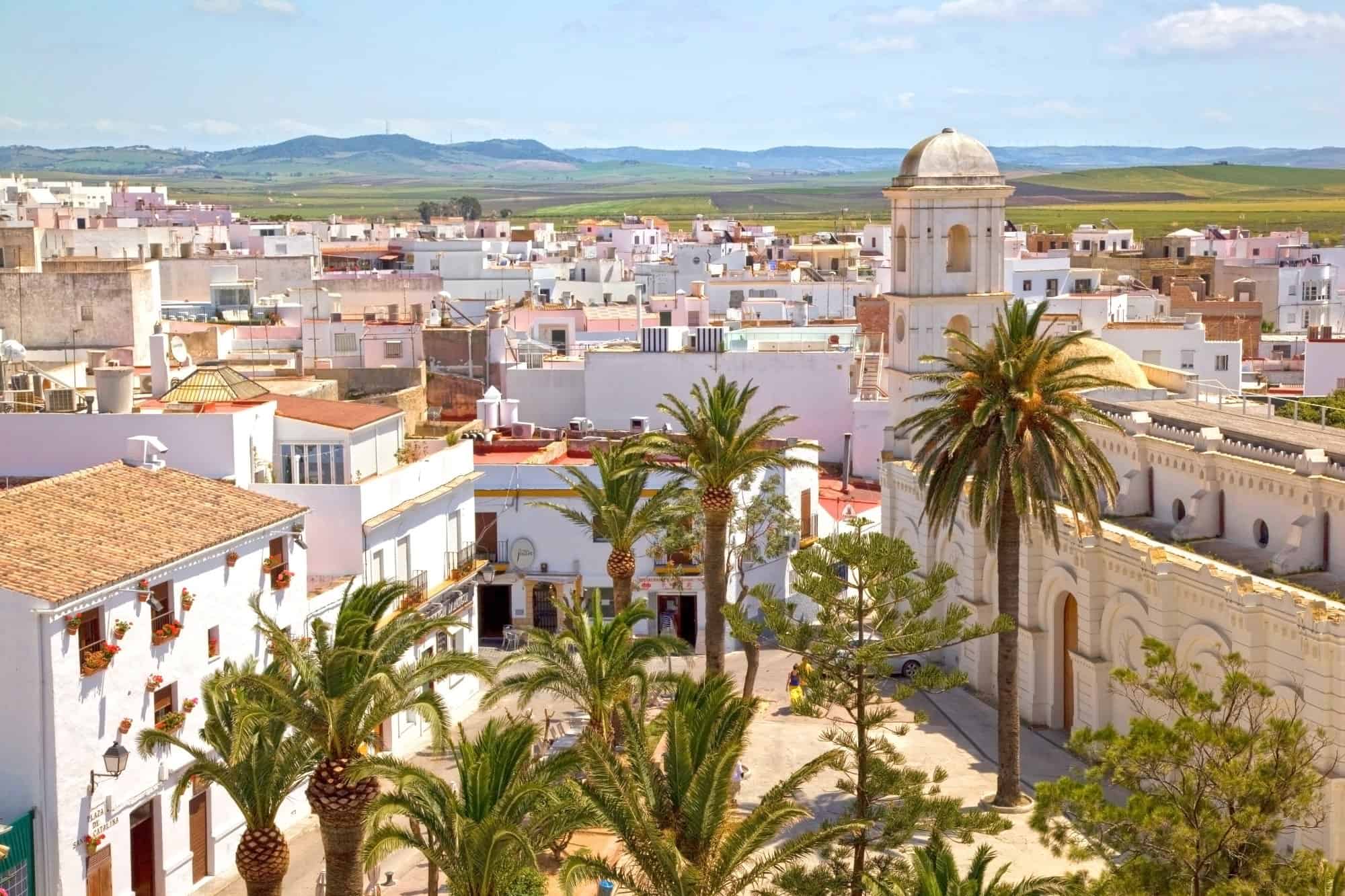
- Ideal for – younger older, digital nomads, and surfing fans.
- Price to buy per m² – €2,264
- Price to rent per m² – €9.20
7. Vejer de la Frontera
One of the stunning 19 whitewashed villages in Cadiz province. Fantastic views of the ocean and miles of rolling countryside. Beautiful old quarter complete with boutique hotels, artists' studios, boutiques, and restaurants. A little hectic in the summer and quiet in winter, although you’ll still find most amenities open.
- Ideal for – foodies and those who appreciate the arty side of life.
- Price to buy per m² – €1,560
- Price to rent per m² – na
8. Zahara de Los Atunes
Yet more great sandy beaches and stunning ocher cliffs. Atlanterra is popular with British and German expats, tourists and second homeowners. The most expensive real estate in the area. Very quiet in winter but with a range of amenities. A foodie paradise, particularly if you’re a fan of red tuna caught using the traditional centuries-old almadraba method.
- Ideal for – tuna enthusiasts and older couples.
- Price to buy per m² – €3,202
- Price to rent per m² – €11.20
9. Tarifa
Europe’s kite surfing capital and a hip, hippy destination. Tons more gorgeous beaches, two of which come with giant sand dunes at one end. Scruffy in parts, shabbily charming in others. Uber busy in the summer and bustling for the rest of the year. The property comes at a premium.
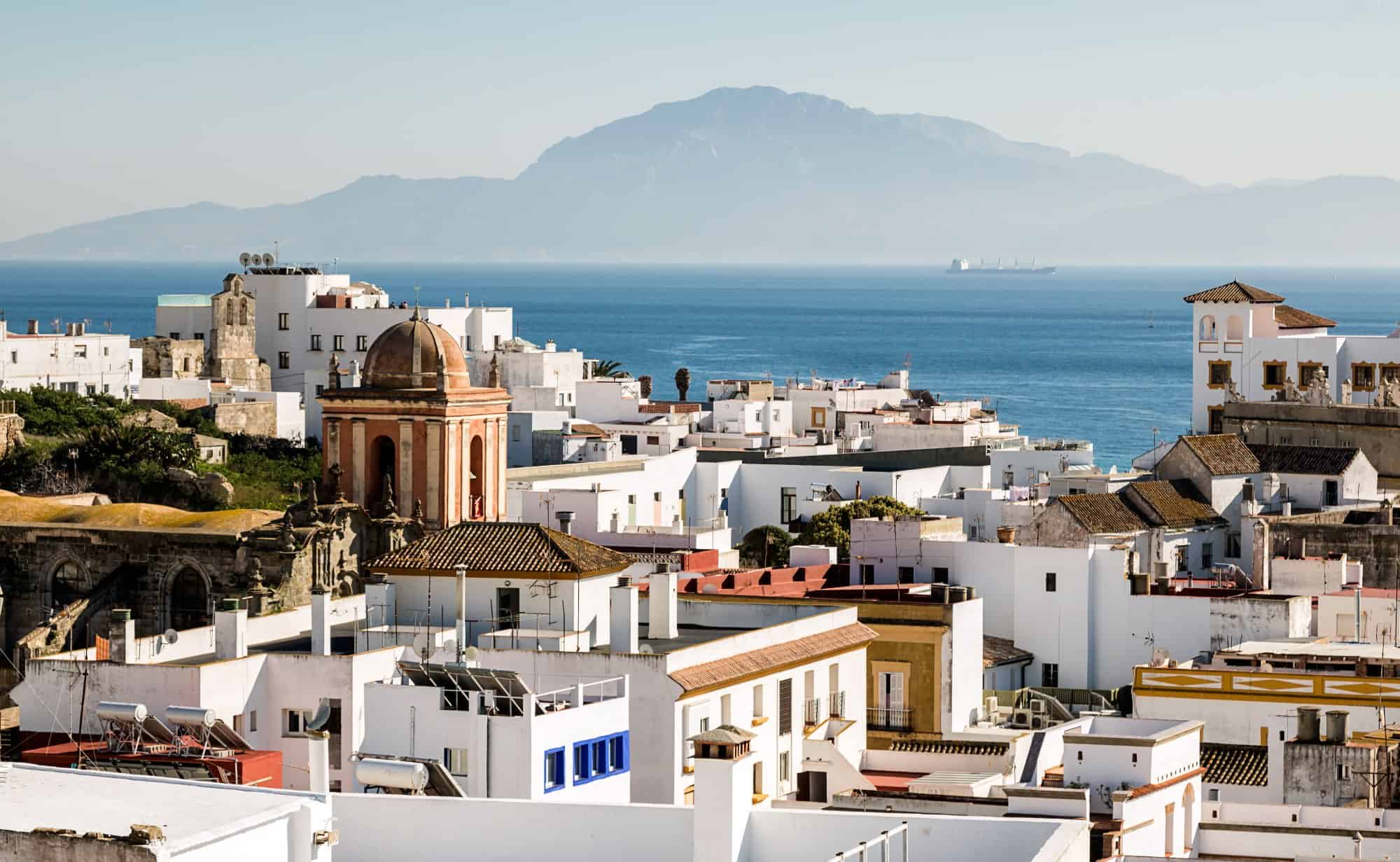
- Ideal for – kite and windsurfers and digital nomads.
- Price to buy per m² – €2,767
- Price to rent per m² – €9.60
10. La Alcaidesa
Next to Sotogrande, one of the most luxurious developments in southern Spain, but considerably cheaper and more down-to-earth. Popular with Spanish tourists in the summer and Gibraltar residents all year round.
- Ideal for – golfers, couples, digital nomads, and those who work in Gibraltar.
- Price to buy per m² – €1,904
- Price to rent per m² – €8.50
11. Sotogrande
Sotogrande is where the Costa de la Luz ends, and the Costa del Sol starts.
It's the most high-end resort on the Costa de la Luz/ Costa del Sol and on par with next-door Marbella. But unlike its glitzy neighbor, Sotogrande does luxury discreetly and low-key. Good amenities, as well as world-class golf courses, polo fields, and the marina. Busier in the summer months and with a small permanent expat population.
- Ideal for – golfers, older couples, and lovers of fine homes.
- Price to buy per m² – €2,449
- Price to rent per m² – €8.90
Final thoughts on living on the Costa de la Luz
Life here gives you the chance to embrace outdoor life, enjoy year-round sunshine, and blow those cobwebs away with a good old sea breeze (and every day of the year!). You’ll also get to see some of the prettiest villages in Andalusia and historic towns and cities.
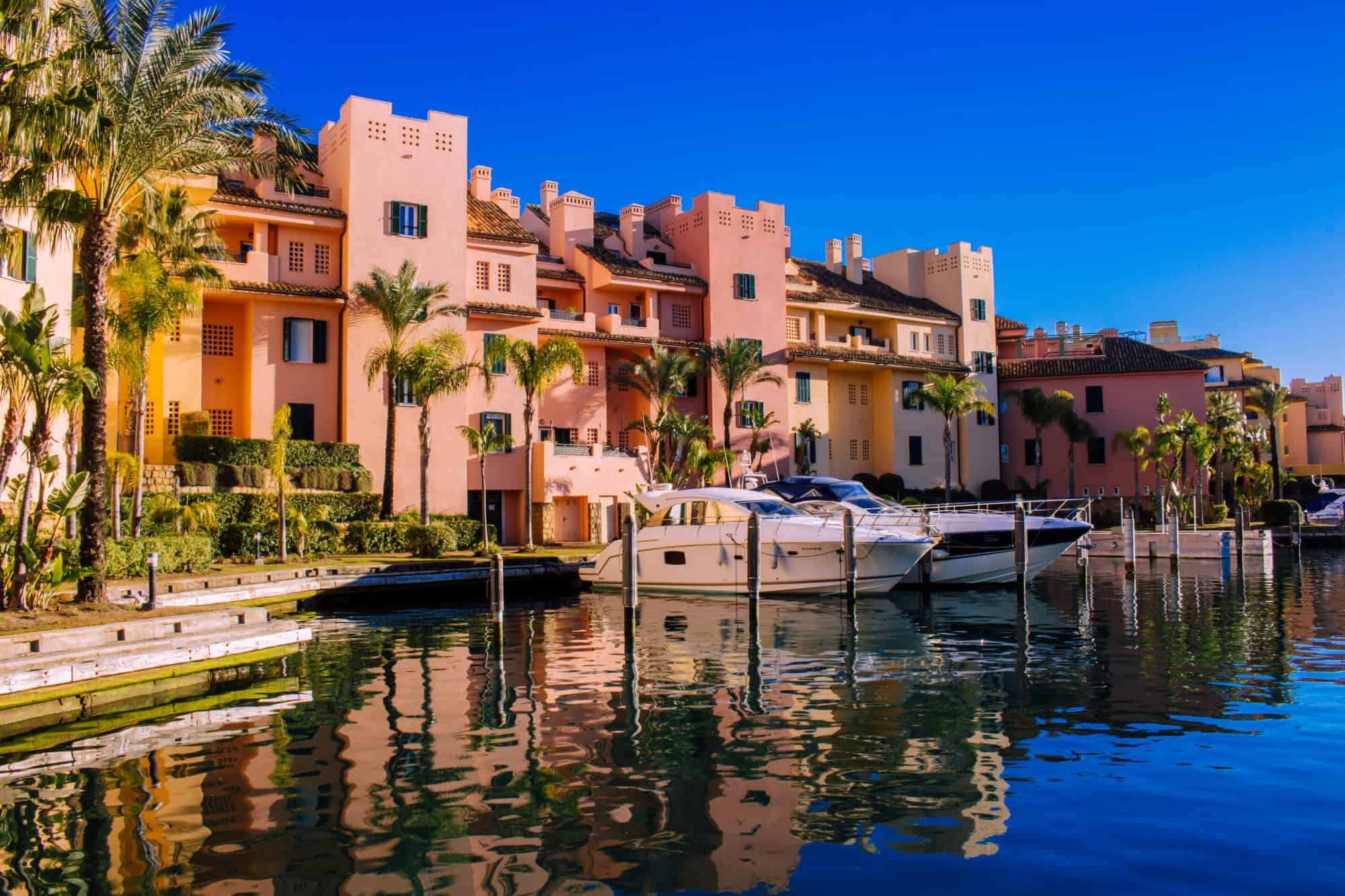
Choose your location wisely, and you won’t pay through the nose for accommodation. Besides, the cost of living isn’t expensive generally. Plus, the sun, sand, and scenery cost nothing at all!
About Maria and Costaluz Lawyers
Maria is the founder of Costaluz Lawyers. The company has been successfully defending expats’ rights and interests in Spain since 2006. Their legal experts are pioneers in the defense of consumer rights, notably those of off-plan buyers.
They cover all legal services needed when moving to Spain, with a particular focus on conveyancing and real estate, Golden visas, and taxation in Spain. Although their head offices are on the Costa de la Luz, they provide legal help and advice anywhere in Spain.
You can contact Maria and her team directly at +34 956 092 687 or marialuisa@costaluzlawyers.es, browse their website or let us know what help you need and we will introduce you personally.
Other popular locations in Spain to consider:
- The Guide To The Spanish Costas For Expats
- Living In Murcia And The Costa Cálida As An Expat
- The Insider Guide To Living In Malaga As An Expat
- Living On The Costa Blanca In The Province Of Alicante
- What’s It Like Living In Estepona As An Expat?
You might find useful:
- Living In Spain As An Expat – the ultimate relocation guide full of practical tips and information on Spanish visas, residency, healthcare, taxes, the pros and cons, and more
- Best Places To Live In Spain– the best and most popular expat locations in Spain.
- Planning & Organising Removals To Spain - How to save time and money on organizing removals to Spain: your removal options, how long they take and how much they cost, shipping pets, etc.
- Didn’t find what you were looking for or need further advice? Comment below with your question; we will do our best to help.
Secure Peace of Mind with Best-Value International Health Coverage
International Citizens Insurance provide free, no-obligation quotes from the leading international health insurance providers with plans tailored to meet your needs. Trusted by thousands of expats worldwide.




